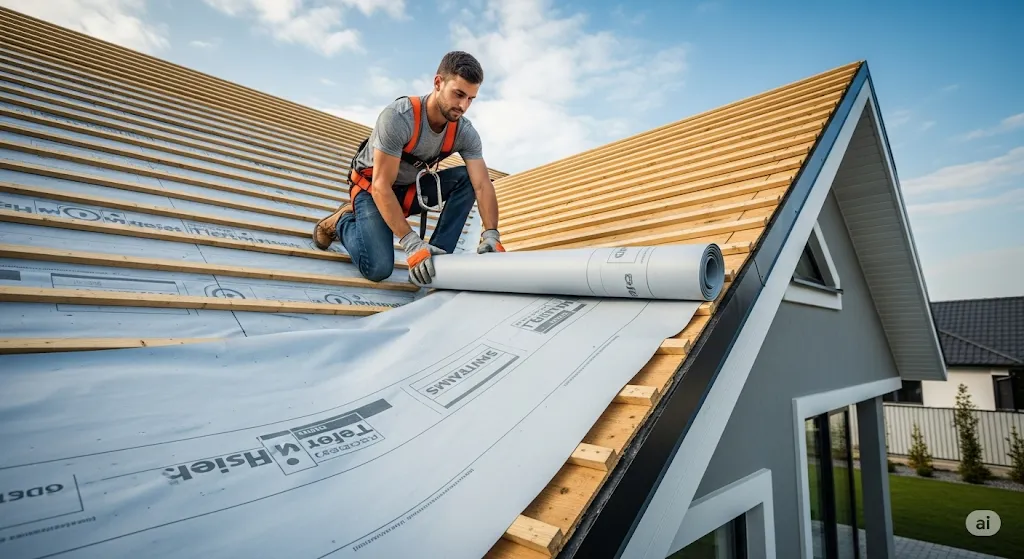
Best Roof Underlayment: Top Choices for Protection & Value
You’ve got plenty of choices when it comes to roof underlayment, but here’s the thing: not every product is worth your money or your peace of mind. Let’s break down what actually works, what doesn’t, and how to figure out what’s best for your home.
What Is Roof Underlayment and Why Should You Care?
Underlayment is that layer between your roof deck and shingles (or tiles). It’s the safety net for your roof—blocking leaks, fighting off wind-driven rain, and giving your home an extra line of defense. Pick the right one, and you’ll barely think about it again. Pick the wrong one, and you’ll never stop noticing leaks or repairs.
The Main Types of Roof Underlayment
Here’s a quick guide to what’s out there:
Asphalt-Saturated Felt (Roofing Felt):
The old-school option. Felt is affordable and simple to install, but it’s not as tough or water-resistant as newer products. If you’re on a tight budget or have a traditional roof, it still does the job.Synthetic Underlayment:
This is what most modern roofers trust. Synthetic is lightweight, tear-resistant, and shrugs off water better than felt. It’s easy to handle, lasts longer, and is less likely to break down if exposed to weather during installation.Rubberized Asphalt:
The premium pick. Self-adhesive, ultra-waterproof, and able to seal around nails and staples. If you get ice, heavy storms, or just want zero worries, this is your best bet—especially for trouble spots like valleys or low slopes.
What Makes an Underlayment “The Best”?
Forget the marketing and look for these real-world features:
Water Resistance: This is non-negotiable. Synthetic and rubberized asphalt outperform felt here, hands down.
Durability: You want something that won’t rip, wrinkle, or fall apart during or after installation.
Ease of Installation: Synthetic sheets are light and easy to roll out. Self-adhesive is even easier.
Warranty & Lifespan: The best underlayments last 25–40 years. Felt might give you 10–20.
Code Compliance: Always check local building codes and roof manufacturer requirements.
Best Roof Underlayment Picks (2024)
For most homes:
Synthetic underlayment wins for balance of price, performance, and reliability.For harsh climates:
Rubberized asphalt offers unbeatable water and ice protection.For tight budgets or quick repairs:
Felt still works, but you get what you pay for—don’t expect miracles.For valleys, eaves, and edges:
Use a strip of rubberized asphalt even if the rest of your roof is synthetic or felt.
Common Mistakes to Avoid
Skimping on quality to save a few bucks (you’ll pay later)
Ignoring overlap requirements (water will find its way in)
Using felt in an area with tons of rain or ice
Not reading your shingle manufacturer’s underlayment recommendations
Installing in poor weather or over a dirty roof deck
FAQs
What’s actually the best roof underlayment?
For most homes, a quality synthetic underlayment gives you the best mix of price, protection, and longevity. Rubberized asphalt is best where leaks are most likely or weather is extreme.
How long should roof underlayment last?
Synthetic: 25–40 years. Felt: 10–20. Rubberized asphalt: up to 40, especially in problem areas.
Is synthetic underlayment worth the extra cost?
If you want to avoid headaches and callbacks, yes. It pays for itself in reduced repairs and a longer roof life.
Conclusion
Here’s what it comes down to: underlayment isn’t where you want to cut corners. The right choice saves you from leaks, mold, and endless repairs. Invest a little more now, and you’ll barely think about your roof for years. Have questions, need a quote, or want honest advice? Contact us here or email [email protected]—straight answers, no pressure.